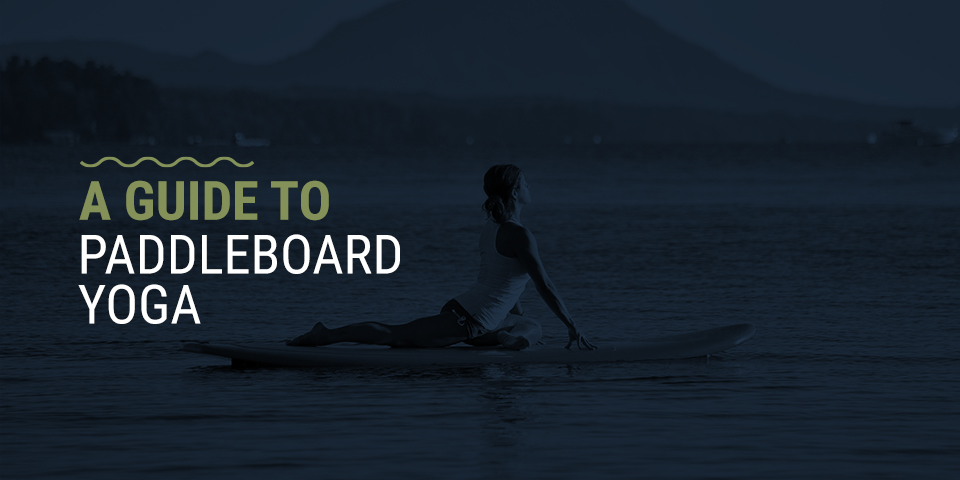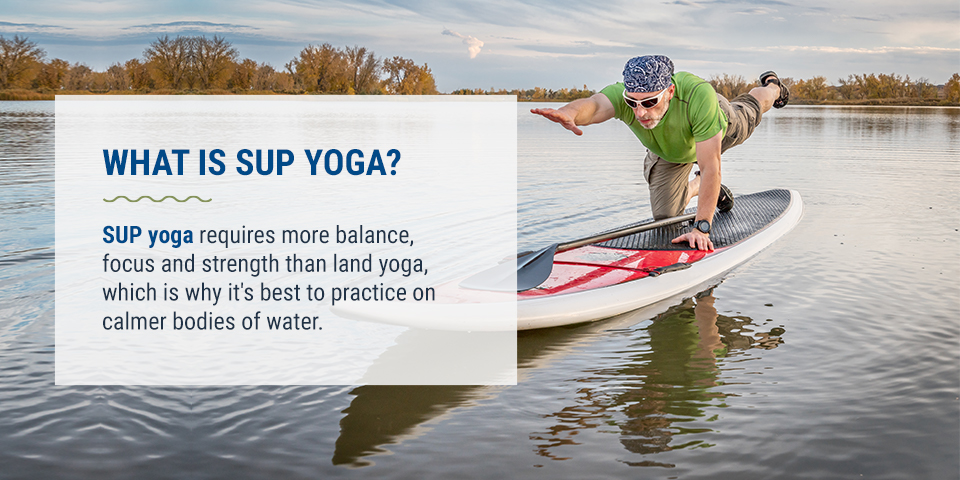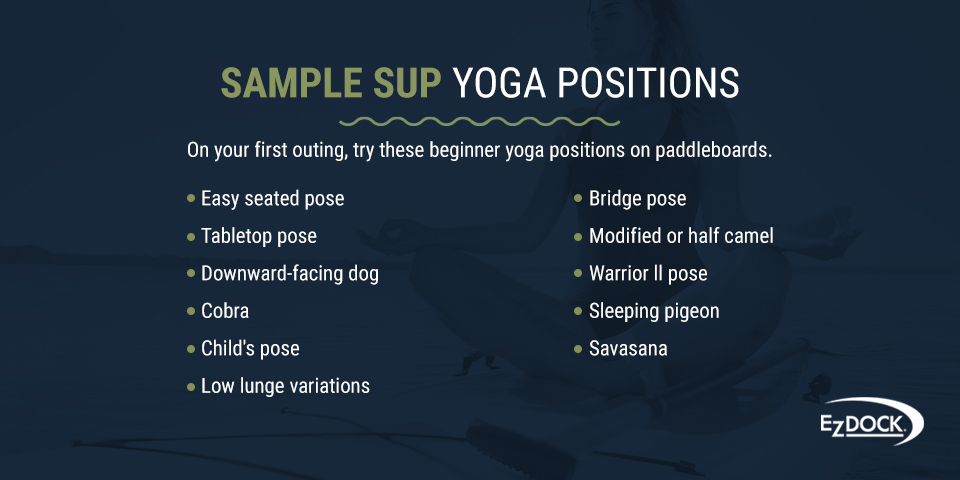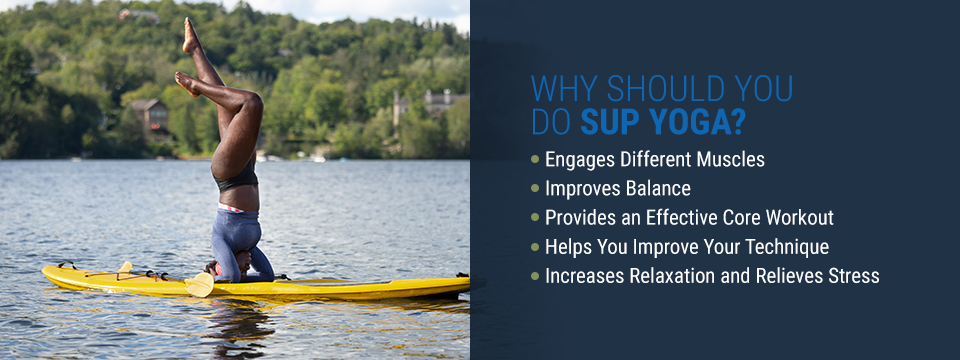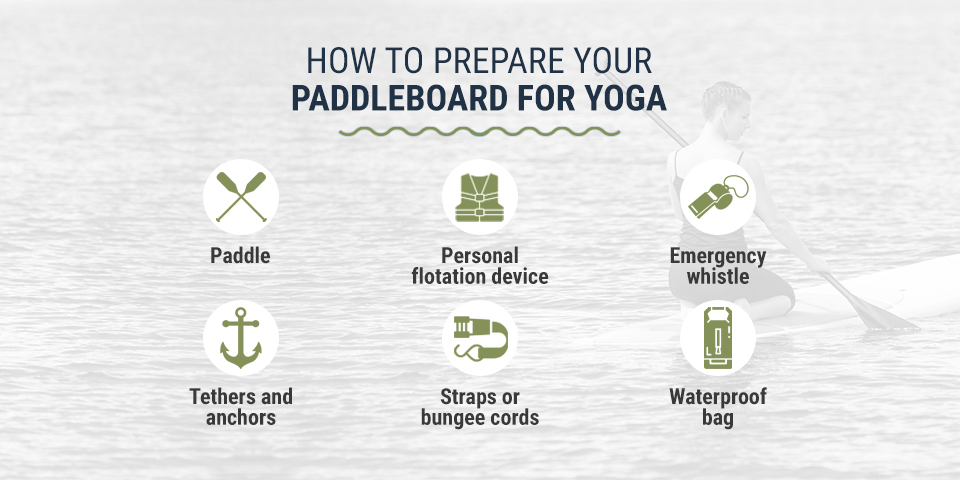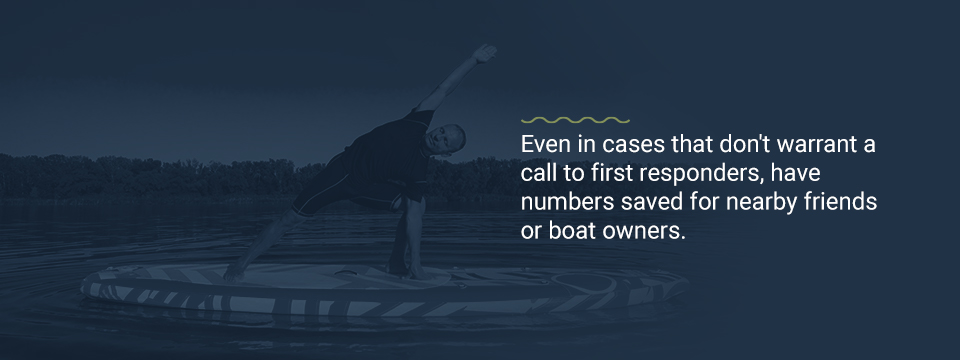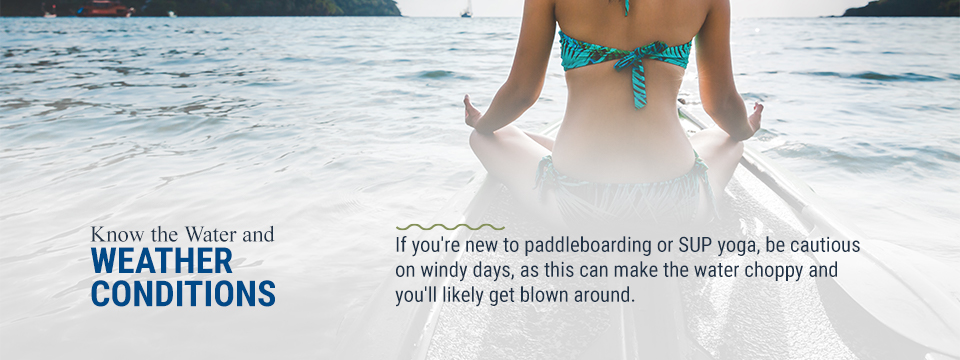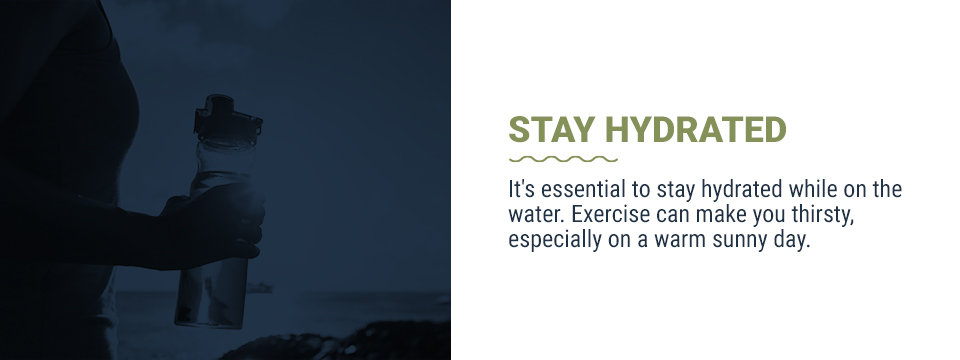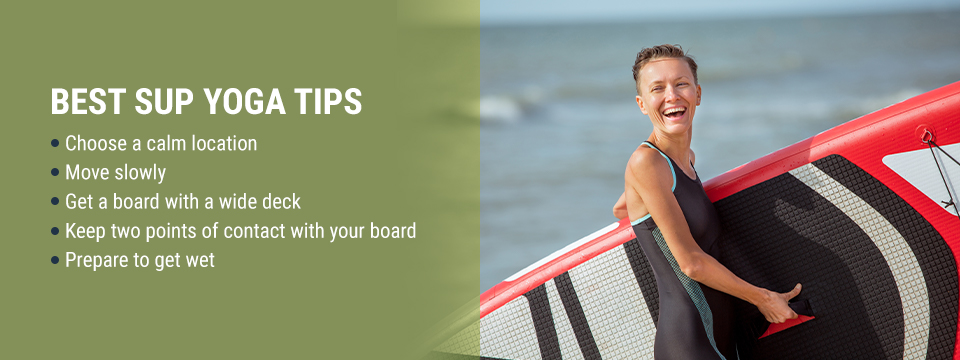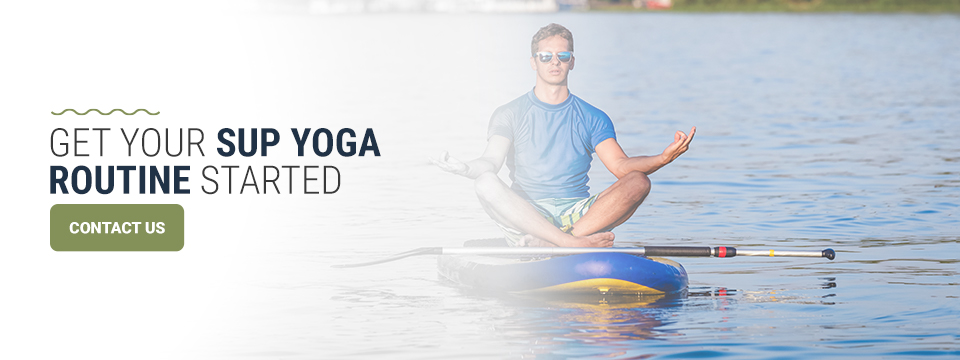Filters
A Guide To Paddleboard Yoga
Yoga on paddleboards has become a popular combination of the two activities. The combo of paddleboarding and yoga is a fun way to be active and relax in nature. In this guide to paddleboard yoga and poses, we’ll break down the fundamentals, recommend types of yoga to try on paddleboards and give you tips and safety suggestions. Whether you’re an experienced yogi or are looking for a new hobby, learn the basics of SUP yoga.
Read the full article or skip to a specific section:
- What is SUP Yoga?
- Benefits of SUP Yoga
- How to Prepare Your Paddleboard for Yoga
- Paddleboard Safety for Yoga
- Best SUP Yoga Tips
What Is SUP Yoga?
SUP is an acronym for stand-up paddleboard. So, SUP yoga is practicing yoga on a stand-up paddleboard. This trending water sport combines yoga and paddleboarding to create a great workout on the water. SUP yoga requires more balance, focus and strength than land yoga, which is why it’s best to practice on calmer bodies of water. The added challenge of practicing yoga on the water is appealing to yogis looking to sharpen their skills.
SUP yoga will work new muscles as you try to maintain balance on the water’s unstable surface. The moving current and wind make it challenging to balance yourself and your paddleboard while transitioning between poses. If you practice yoga on land, you may be surprised to find that some of the most approachable poses are significantly more demanding on a paddleboard. This added challenge will only refine your skills and technique and strengthen new muscles.
If you’re new to yoga paddleboarding, you may consider finding a class to attend. SUP yoga classes typically involve a warmup paddle, beginner paddleboard poses, breathing exercises and some fitness exercises like planks and lunges, too. Attending SUP yoga classes can be a great introduction to the sport, or you may decide to venture out and teach yourself.
Paddle Board Yoga Poses
Whether you regularly practice yoga or not, SUP yoga may seem intimidating at first. Luckily, it’s something anyone can do, no matter what your level of experience with yoga or paddleboarding may be. As with anything, you’ll get better as you build your skills with practice. On your first outing, try these beginner yoga positions on paddleboards.
- Easy seated pose: Face the front of your board. Sit on the handle and gently rest your hands on your knees. Sit up tall, take deep breaths and feel the rocking water beneath your board.
- Tabletop pose: On your hands and knees, center your navel over the handle. Keep your shoulders over your wrists. Look down with the back of your neck parallel to the board.
- Downward-facing dog: Start in the tabletop position. Slowly extend your hips up and back, fully extending your arms and legs without locking your elbows or knees. Keep your back straight and take deep breaths as you look at the horizon behind you. Apply pressure with your thumb and index finger to prevent straining your wrists.
- Cobra: Lie with your belly on the handle. Place your hands on the board next to your ribcage, keeping your shoulders above your wrists. Lift your head, shoulders and chest, and straighten your arms. Turn your face toward the sky and take deep breaths.
- Child’s pose: Start in the tabletop position. Widen your knees at an angle so your toes touch. Sink your hips back to your heels and gently rest your forehead on the mat of your board. Your arms can either extend in front of you with your palms on the board, or you can rest them on the sides of the board and let your fingers dance in the water.
- Low lunge variations: Start in the tabletop position with your hips over the handle. Bring your left foot up between your hands. Balance yourself and slowly bring your hands up to your knee. When you feel stable, add variations. Try stretching both arms in the air or planting one hand on the board and twisting to reach the other hand into the air. Switch legs and try it again with the opposite arm in the air.
- Bridge pose: Start on your back with your hips over the handle. Plant the soles of your feet slightly wider than your hips and bend your knees. Extend your hips toward the sky and stretch your arms underneath to try and reach the backs of your heels. If you feel stable enough, try lifting one leg at a time.
- Modified or half camel: Kneel around the handle. Place one hand on the board behind your feet, lift your hips and stretch your opposite hand back, over your head. Tuck your toes for more stability. Switch sides.
- Warrior ll pose: From your knees, slowly stand up with a wide stance. Extend your right leg back and toward the right side of the board. Your left leg should be forward on the left side of the board and bent at the knee as if lunging. Extend your left arm in front of you and your right arm behind you, parallel to the board.
- Sleeping pigeon: From the tabletop position, pull your right knee up to touch your left wrist, keeping your thigh parallel to the side of your board. Inch your left foot forward until it’s at your right hip. Slide your right leg back, lowering your hips to the board. Once your hips settle, walk your hands toward the front of your board as far as your hips will allow. To deepen the stretch, press the top of your back foot into the board and walk your hands forward until your forehead rests on your board.
- Savasana: This position is as simple as lying flat on your back with your eyes gently closed. Face your palms upward and allow your feet to fall to the sides. Use this pose to completely relax every muscle in your body. SUP yoga adds an extra level of relaxation to this pose. Focus on your breathing while listening to the nature around you and feeling the water moving beneath your board.
Before you try out these beginner SUP yoga positions, remember to slow down. SUP yoga takes more balance than land-based yoga, and transitioning through poses too fast will affect your balance. Try to keep yourself centered on the board, which is usually oriented around the handle. When you need a bit of extra stability, focus your eyes on a fixed point on land. Just like moving too quickly, shifting your gaze too quickly can throw you off balance.
As you master these SUP yoga poses, you can begin to explore more advanced positions. While some poses might not look challenging, the extra balance needed for SUP yoga makes them more demanding.
If you want to add some variety to your indoor yoga routine or are looking for a new way to enjoy the outdoors, SUP yoga is a great way to do so. SUP yoga includes everything you love about land yoga with a twist. There are several reasons yogis and paddleboarders combined the activities, including relaxing on the water or working out. Find out what benefits of SUP yoga you may want to start taking advantage of.
Engages Different Muscles
SUP yoga is a beneficial workout because it engages muscles your typical yoga routine may not. The water’s instability requires your body to balance itself in new ways you don’t encounter on solid ground. This fluidity flexes new muscles your body doesn’t ordinarily need to use, allowing you to build and strengthen different muscles and become more evenly toned.
Improves Balance
You may already know and love on-land yoga’s ability to improve balance and flexibility. SUP yoga is no different and even helps you build these skills more than regular yoga. Working to balance yourself while floating on the water is a great way to improve your balance on its own. Add the challenge of transitioning through yoga poses while keeping yourself balanced on your paddleboard, and you’ll begin to build core and stabilizer muscles in no time. The more you practice your yoga positions on a paddleboard, the better your balance will become.
Provides an Effective Core Workout
While we all know exercise is good for you, it can be challenging to establish a consistent routine, and many people don’t enjoy core exercises like crunches and planks. Luckily, yoga paddleboarding can strengthen core muscles. Combining core-targeting yoga poses with the necessary strength to balance on a floating board makes for an effective ab workout. You can burn between 300 and 400 calories while leisurely paddleboarding and up to 540 calories with an energetic SUP yoga flow. SUP yoga can be a fun and relaxing way to get your workout in.
Helps You Improve Your Technique
If you regularly practice yoga, you may feel like you’re on autopilot repeating the same flow of poses time after time. SUP yoga can introduce new challenges to experienced yogis. Simple poses require more balance and increased focus, throwing you out of your normal routine. SUP yoga allows you to practice old poses with a new mindset. Pushing yourself will increase your technique and give you something new to try. Beginner yogis can use SUP yoga to train themselves, making the transition to on-land yoga a breeze.
Increases Relaxation and Relieves Stress
Breathing techniques are a fundamental aspect of any yoga practice. Taking full, deep breaths helps relieve stress, which helps you relax. Floating on the water and spending time outdoors with beautiful scenery also helps increase relaxation. Being outside and getting fresh air while practicing yoga and focusing on your breathing is a recipe for relaxation and stress relief. You may be surprised at how rejuvenated you feel after a session of SUP yoga.
How to Prepare Your Paddleboard for Yoga
Before you get out on the water, make sure your paddleboard is ready for yoga so your session is a success. Use the following checklist to ensure you have everything you need.
- Paddle: Of course, if you’re paddleboarding, you need a paddle! You may want to find an adjustable paddle, though any SUP paddle will work for SUP yoga. You’ll mostly need it for paddling out to your spot and back to the shore. While you’re practicing yoga, you’ll want to keep your paddle strapped to the side of your board or tethered on a leash so it won’t float away.
- Personal flotation device: Most states require you to at least have a personal flotation device on board with you. The laws vary by state and age, so check the requirements before you go. PFDs are for your safety, so it’s best practice to always have one with you. If you choose to wear one at all times, look for a compact PFD you can wear around your waist, so it stays out of your way during your yoga routine.
- Emergency whistle: Bring a whistle or other noisemaker out on the water with you. In case of an emergency or if you need assistance, you’ll blow your whistle to signal others. A whistle is small and could be easy to lose, so many paddlers and yogis keep their whistle attached to their PFD. This habit ensures you remember both items for your session on the water.
- Tethers and anchors: Wind and currents can cause your paddleboard to drift on top of the water. To ensure your board stays in the spot you chose, attach an anchor and tether to your board. A small kayak or paddleboard anchor will work perfectly. You can also attach tethers to your paddle to ensure it stays within arm’s reach. While an anchor is not essential to SUP yoga, you may find it more relaxing to float in one spot rather than drift around.
- Straps or bungee cords: Extra straps and bungee cords can help secure your belongings to the board. Use them to tie down your paddle, water bottle, bag or other gear. You may also consider getting a leash for your paddleboard. When connected to your ankle, a leash can be helpful if you fall in the water because it will ensure your board stays floating within reach.
- Waterproof bag: A waterproof bag is a great item to have when paddleboarding. If you’re a yogi who likes to dress in layers or keep an extra set of clothes on hand, a waterproof bag will help prevent them from getting wet while you’re on the water. Having a waterproof bag also provides you with a safe, dry place to keep your phone or car keys with you on the water.
Paddleboard Safety for Yoga
In addition to relaxing and getting a good workout, safety should be among your top priorities when practicing SUP yoga. Paddleboard safety is pretty simple, as long as you know what to look for.
Check Your Equipment
Inspect your equipment before your session on the water.
- Are your leashes, tethers and straps fraying or falling apart?
- Do you have an appropriately sized PFD, and is it in good condition?
- Does your emergency whistle work correctly?
- Are any parts of your paddle or board loose or worn down?
Replace any damaged or worn-out gear to ensure everything works properly. If your equipment is new, you most likely won’t need to worry about this, though it’s good to keep in mind for the future. Now is also an ideal time to make sure you have all the necessary equipment for a safe trip. For example, if you’ll be on the water after dark, bring a light so others can see you.
If you’re taking your phone out on the water with you, take time beforehand to save emergency phone numbers in your contacts. Having a quick way to reach local lifeguards or other rescue teams can save your life in an emergency. Even in cases that don’t warrant a call to first responders, have numbers saved for nearby friends or boat owners. Communicate with these other contacts when you’ll be on the water so they can be ready to lend a helping hand if you need it.
Poor water and weather conditions can make for an unsafe day on the water. It’s essential to keep an eye on the weather, as it usually affects the water conditions. If you’re new to paddleboarding or SUP yoga, be cautious on windy days, as this can make the water choppy and you’ll likely get blown around. It’s best to stay out of the water on rainy or stormy days, especially with beginner paddlers. Respect the water and weather conditions, since nature can sometimes be unforgiving.
Protect Your Skin From the Sun
Sunscreen is your best friend. When you’re on the water, you’ll need to protect yourself from additional reflection and increased UV exposure. Remember, you can still get sunburned on an overcast day. It’s a best practice to bring some sunblock on the water with you and reapply it regularly, especially if you plan on being out for several hours.
It’s essential to stay hydrated while on the water. Exercise can make you thirsty, especially on a warm sunny day. Make sure you have a place on your paddleboard where you can strap down a water bottle, so it’s available when you need it.
Best SUP Yoga Tips
To help get you started, here are a few additional tips to keep in mind when practicing SUP yoga:
- Choose a calm location: Finding a spot on the water where there’s less wind and waves will make your SUP yoga session more enjoyable. Calm waters make it easier to balance and paddle so you can focus on learning the basics and getting comfortable instead of fighting rough waters.
- Move slowly: Remember to move slowly. Quick movements may throw you off balance and into the water. Even simple poses require more focus on the water. Take your time moving through your yoga flow — there’s no rush.
- Get a board with a wide deck: There are many options for paddleboards for yoga. Choose one with a large, wide deck so you have room to do your stretches. A wider board also provides more stability.
- Keep two points of contact with your board: To start, try to practice poses that involve at least two points of contact with the board. As you build confidence and are more stable on your board, you’ll feel more comfortable doing poses that require standing on one leg.
- Prepare to get wet: Especially as a beginner, you should be ready to get wet. As you explore your SUP yoga abilities, you’ll likely fall in the water a time or two. Embrace these moments. The water is unpredictable and may knock you down. Have fun and learn from falling in!
SUP yoga is an excellent way to take your love or interest in yoga and paddleboarding to the next level. EZ Dock products can help make your paddleboarding experience even more enjoyable. When launching your paddleboard, boarding from a floating dock or low-profile dock would allow you to get closer to your board and the water with comfort. Our EZ Dock paddleboard dock is a stable, slip-resistant option for easy launching.
With customizable options, you can design an ideal dock layout for your needs. Contact us for more information or to request a quote.

